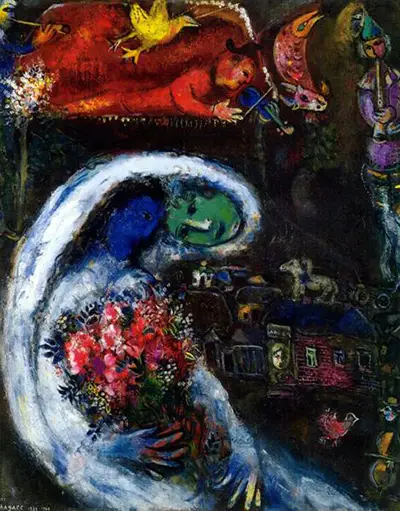Chagall's paintings have become exceptionally valuable in recent years, for a number of reasons. His work is technically impressive and also highly influential within the development of art history, but his style is also particularly popular. The option of having one of his artworks within your collection is too much to resist for many, meaning his artworks will be competed for aggressively at auction. Those with smaller budgets may look at his limited edition prints and lithographs, but the more serious collectors will attempt to get hold of some of his unique oil paintings, such as the one found here. They are now worth many millions, where as the limited edition lithographs can be picked up in most cases for around $10,000, approximately. Chagall himself used multi series prints as a means to adding an extra income stream as well as spreading his reputation into a wider part of society.
This artwork is relatively dark in nature, though with some bright elements which stand out in contrast against the background. Many of the signature elements of Marc Chagall can be seen within this painting, with embraced lovers, violins, bird-like creatures and a small display of buildings below them. He would frequently include items flying around in the sky, akin to a dream world, in which he would incorporate the deepest parts of his imagination. The artist excites us with his palette of reds, yellows, whites, greens and blues and these colours can be seen right across his career, with the variation being how prominent they are across each piece. In this example it is the white and red which catch our eyes the most.
This was an artist who created a style which is instantly recognisable as his own, both in style and content. He essentially produced a recognisable brand through the embraced lovers and flying angels that persist in so many of his paintings. Chagall also took elements from other movements into his own, including Cubism and how it changed the rules of perspective. In the case of this painting in front of us, we find the small buildings behind in the background, but the rest of the composition is large and flat in perspective, covering every other corner of the work.
